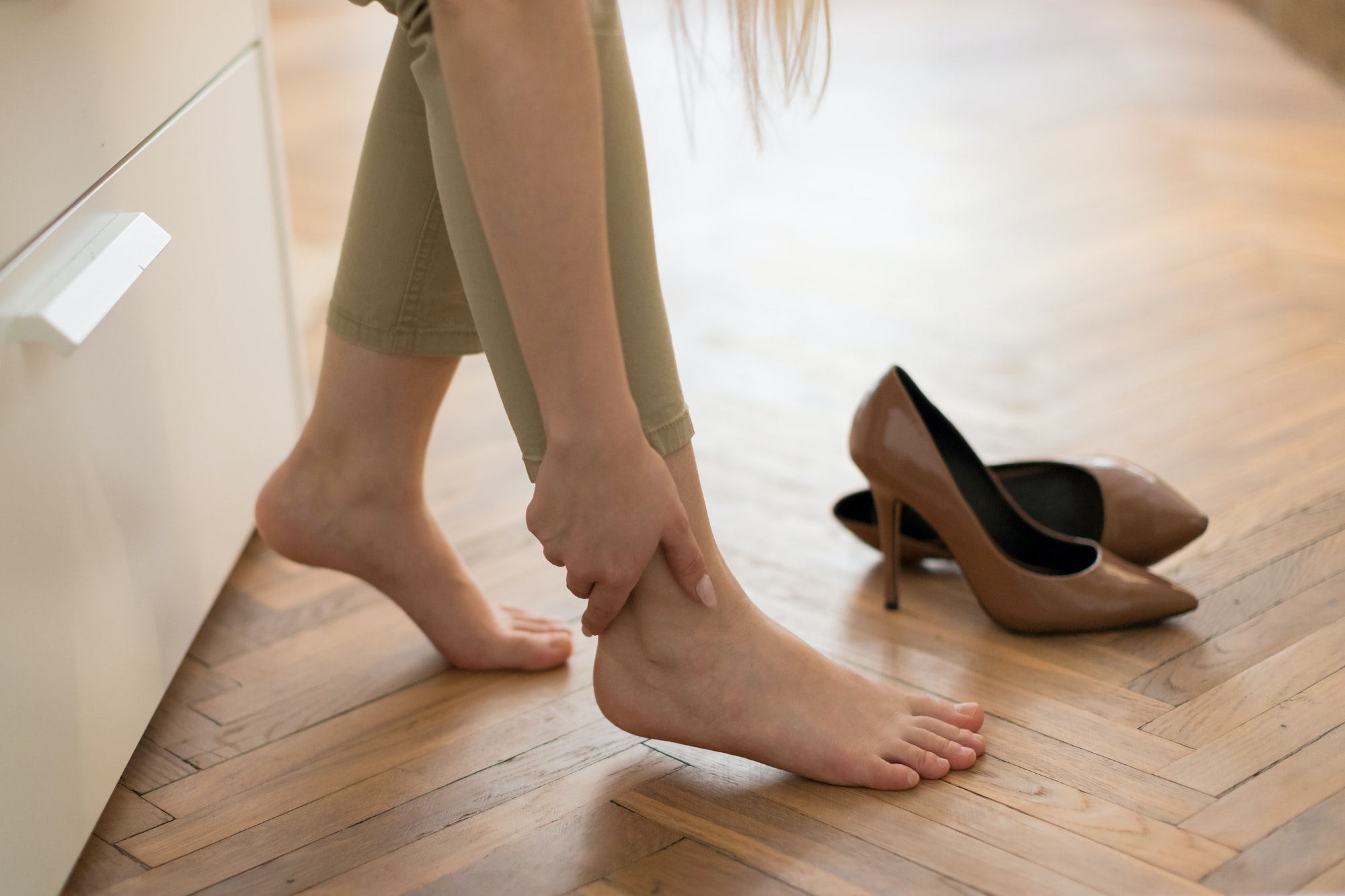If you are experiencing sharp pain in your foot arches or heels you might have plantar fasciitis. Do you feel a stabbing foot pain when you take your first steps in the morning?
That is another possible sign. As you move around the pain usually subsides. But you might feel that pain coming back after standing around for a long time or getting up from sitting.
As the day goes on your pain might gradually get worse, especially during evenings. Your pain probably will not worsen during a workout. But after exercising it is not uncommon for the pain to get worse.
If you have these signs, learn more about how to relief pain fast and start your healing process.
3 Signs You Haev Plantar Fasciitis
Plantar fasciitis is a condition that occurs when the ligament that runs from the bottom of the foot to the heel appears to have a bulge. It can usually appear in one foot over time.
If you think that you might have plantar fasciitis, see a Sugar Land foot doctor as soon as possible. He or she can diagnose the condition and provide helpful suggestions on how to treat it.
Sign 1. You Have Stabbing Pain
Plantar fasciitis is a type of pain that usually appears in the heel. It can also run along the bottom portion of the foot. The most common type of pain is soreness.
Getting out of bed early in the morning or after prolonged sitting or standing still is very common for people with low back pain.
Depending on the condition, the pain may get worse as the ligament gets stretched out. It can then interfere with mobility or even worsen as it gets longer.
Sign 2. Your Heel is Burning
A person with plantar fasciitis can also experience burning sensations in their feet. This type of pain usually occurs along the base of the foot and can last for several days.
Sign 3. Your Heels are Stiff
This condition can get very stiff and painful after periods of inactivity. It can also cause swelling.
Your doctor may show you some exercises that can help lower your stress levels and reduce some of your symptoms.
If these sign fits you, first shop for a pair of best shoes for plantar fasciitis and make sure you know which brands are the most trusted by the public before you buy.
Plantar Fasciitis Causes
Plantar fasciitis is the inflammation or degeneration of the plantar fascia, a thick band of tissue that runs across the bottom of your foot and connects your heel bone to your toes.
Daily walking and running lead to repeated stressing of your plantar fascia, which then could lead to inflammation and ultimately plantar fasciitis. Although the exact mechanism of how this happens is still unclear.
So what causes all this stress? There are actually a lot of different things that can put your plantar fascia under tension and cause these small tears. This list typically includes:
- Unsupportive shoes. Shoes that don’t fit right just won’t cut it for preventing plantar fasciitis. Neither will worn-out shoes, or shoes that provide no support for your arches. Remember, the plantar fascia’s goal is to help hold up your arch, so give it some support!
- Excess Weight. Being overweight can put too much extra strain on the plantar fascia. Your feet have to support your whole body, so too many extra pounds can lead to too much strain on your feet.
- Exercise. Of course, exercise is great for you! However, high-impact exercises such as running, and many sports can lead to plantar fasciitis if the feet and muscles are not properly taken care of after activities.
- Age. If you’re over 40 years old, your risk of getting Plantar Fasciitis goes up. This risk can be lowered through stretching and foot exercises.
- Standing for a Long Time. Being on your feet all day can put serious stress on your plantar fascia. Service employees, factory workers, teachers, and any other job that puts you on your feet all day can increase the risk of Plantar Fasciitis.
- Foot Problems (Genetic or Chronic). If your feet overpronate (roll your feet inward) when you walk, or you have high arches, it can put extra stress on your plantar fascia.
- Tense Muscles. Remember to stretch after you exercise! Tight calf and foot muscles can play a big factor in plantar fascia stress.
Plantar Fasciitis Symptoms
Plantar Fasciitis isn’t always the cause of heel pain, but as we’ve said it is the most common. The typical symptoms of Plantar Fasciitis are:
- Sharp pain near the heel
- Moderate to severe pain after rising in the morning that improves after walking
- Stiffness in the foot after rising
- Pain in the foot that gets worse throughout the day
- Pain after going up or down stairs
- Pain after standing for long periods of time
- Pain that flares up after, but not during exercise
- Tenderness, swelling, or inflammation around the foot
If you have any combination of these symptoms, you should see your podiatrist to get their opinion. You may very well have Plantar Fasciitis.

Austin is the author of loveatfirstfit.com and a personal trainer with extensive knowledge in nutrition. Austin is passionate about helping others to find a suitable healthy lifestyle and feel good about themselves. Austin’s goal is to help people push their limits and achieve their physical performance.

